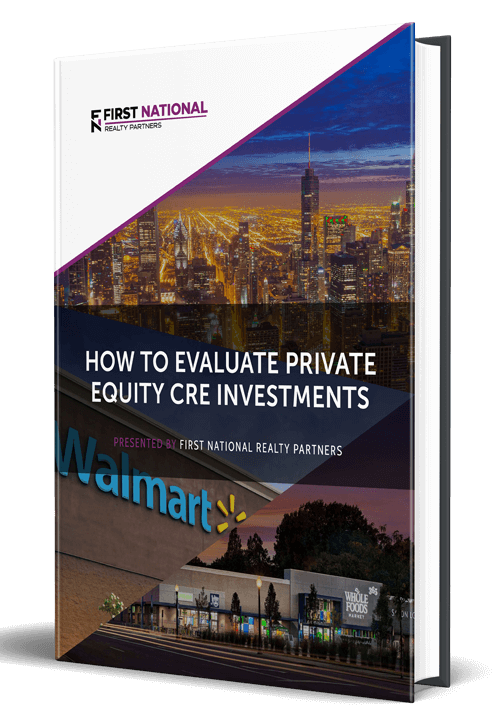In a typical commercial real estate asset, there are one or more buildings containing space that is leased to tenants. Under the terms of their lease, tenants are required to pay some amount of monthly rent in return for the privilege of occupying the space.
But, commercial properties also contain many other areas meant to support the tenants who occupy the asset. These areas include things like: parking lots, lobbies, elevators, hallways, fitness centers, and playgrounds. These “common areas” are not leased to a tenant – they are meant to be shared by all of them – but there is still a cost to maintain them. For example, a parking lot needs to be cleaned and landscaped or elevators need consistent maintenance, but these spaces don’t produce any rental income. The cost of maintaining common spaces can be significant and who carries the cost burden of paying is a point of negotiation in most commercial real estate leases.
There are two major types of commercial real estate leases, “gross” and “net”, and their differences are the subject of this article. By the time they are finished reading, individuals should be able to define what gross and net leases are, identify the major differences between the two, and determine which is the better type for their own investment objectives.
At First National Realty Partners, we use both gross and net leases in our properties, depending on the unique circumstances of the leasing situation. To learn more about our current property offerings, click here.
Gross Leases vs. Net Leases: What is the Difference?
The key difference between gross and net leases has to do with who is responsible for paying the commercial real estate property’s common area maintenance costs. NOTE: In this article, the discussion is limited to two specific sub-types of gross and net leases known as the “full service gross lease” and the “triple net lease.”
What is a Full Service Gross Lease?
In a full service gross lease, the tenant pays one monthly rental amount and the landlord pays all of the property’s operating and common area expenses. In this commercial real estate lease structure, the base rent tends to be higher because the landlord needs to use some portion of it for the common area maintenance and operating expenses.
Benefits and Drawbacks of a Full Service Gross Lease
There are benefits and drawbacks to the full service lease structure for both the tenant and the property owner.
For the tenant, the major benefit is simplicity. They only have to worry about making one rent payment per month and it will always be the same amount. In addition, they don’t have to worry about rising operating costs for things like real estate taxes or property insurance. But, the major drawback is that a full service gross lease can end up being more expensive.
For the landlord, the major benefit of this structure is that they get to collect more rent from the tenant because the rates are higher. In addition, they also benefit from simplicity because there is a clear division between who pays the rent and who pays for the property’s upkeep. But, the major risk for the landlord is that they have to carry the burden of rising expenses. If an insurance premium goes up by 20%, they are not able to pass this increase on to the tenant right away. They may need to wait until the lease comes up for renewal to renegotiate the rental amount.
What is a Triple Net Lease?
In a triple net lease – sometimes referred to as an NNN lease – the tenant pays a base rental rate plus their share of the property taxes, building insurance and maintenance expenses (landscaping, property management, janitorial services, etc). If the commercial real estate property only has one tenant, they are required to pay all expenses. If the property has multiple tenants, the lease outlines the specific calculation used to measure each tenant’s pro rata share. Usually, it is based on the amount of square footage leased by each tenant relative to the total number of square feet in the property. For example, if a tenant leases 1,000 square feet in a 10,000 square foot building, their share of the expenses could be 10%. In a triple net lease agreement, the base lease rate is lower than the full service lease, but the additional rent for the building expenses and maintenance costs may make the total cost similar.
Benefits and Drawbacks of a Triple Net Lease?
Again, there are benefits to this commercial real estate lease structure for both the tenant and the property owner.
For the tenant, the major benefit of the triple net lease is the lower base rental cost and the fact that they are only paying their share of the operating expenses. However, the major drawback is that the risk of rising costs is shifted to the tenant. Since these costs are treated as “pass throughs”, it is feasible that the base rent could start low, but rising costs could actually make this structure more expensive than a gross lease.
For the landlord, the benefit is that they can pass on these additional expenses to the tenant, which means that their net lease income could actually be higher. But, this structure can be administratively burdensome because it is the landlord’s responsibility to reconcile actual expenses vs. those recovered from the tenant.
So, Which Is Right For You?
From an individual commercial real estate investor standpoint, the dominant lease structure used in the property can reveal some clues about the risk/return profile of the deal and the level of effort required by the owner to oversee the property.
In general, a property filled with tenants on gross leases can require a bit more active oversight because the owner is responsible for paying all of the bills and ensuring that the property is kept in good working order. As such, it is necessary to ensure that the property has a strong manager. For example, we are a vertically integrated firm and manage all of our own properties with our own in-house team. We feel that this level of control is a major value add for commercial real estate investors.
At the other end of the spectrum, a property filled with tenants who have triple net leases may require slightly less oversight. In particular, single tenant triple net leased properties like bank branches, drug stores, or quick service restaurants are popular with commercial real estate investors seeking passive income because they are relatively low touch assets.
One of these lease structures isn’t necessarily “better” than the other. But, one may be a better fit for an investor’s individual preferences, risk tolerance, and return objectives.
Interested In Learning More?
First National Realty Partners is one of the country’s leading private equity commercial real estate investment firms. With an intentional focus on finding world-class, multi-tenanted assets well below intrinsic value, we seek to create superior long-term, risk-adjusted returns for our investors while creating strong economic assets for the communities we invest in.
If you are an Accredited Real Estate Investor and would like to learn more about our investment opportunities, contact us at (800) 605-4966 or info@fnrpusa.com for more information.






